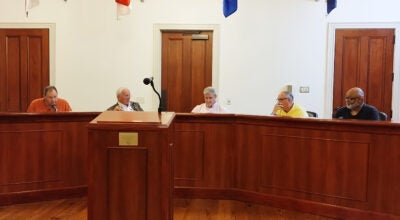Marengo, 22 other counties placed under drought warning
Published 2:20 pm Thursday, October 28, 2010
MONTGOMERY — Governor Bob Riley today declared all 67 counties in Alabama are facing a drought and named 23 of the counties to the Drought Warning level due to the lack of rain and the low probability for any significant near-term relief. The declarations follow an assessment by the state’s Office of Water Resources, which is part of the Alabama Department of Economic and Community Affairs.
Assessments by the Office of Water Resources are based on a review of current and anticipated hydrologic conditions, including rainfall, streamflow, reservoir elevations and soil moisture levels. Lack of rainfall and declining streamflows and reservoir levels place the majority of the state in a mild to severe drought with conditions likely to worsen.
Counties listed under the Drought Warning status, which is just one step below the most severe drought level, are: Barbour, Calhoun, Chambers, Chilton, Choctaw, Clarke, Clay, Cleburne, Coffee, Coosa, Dale, Dallas, Geneva, Henry, Houston, Marengo, Monroe, Pike, Randolph, Talladega, Tallapoosa, Washington, and Wilcox.
The state’s remaining counties are under a Drought Watch.
“While 2009 was a very wet year and we had plenty of rain earlier this year, we have not had anything approaching normal rainfall since early spring,” said Governor Riley. “This has resulted in very dry conditions throughout much of Alabama and the need for water users to carefully monitor conditions in case they get worse.”
Public and private water systems, as well as other large users, are encouraged to carefully monitor conditions and prepare emergency procedures in the event that the situation worsens. Drought declarations will be updated as necessary and will be available on the Office of Water Resources’ web site at www.adeca.alabama.gov/water.
In addition, the Alabama Forestry Commission has issued a Fire Alert for all Alabama counties which will remain in effect until rescinded by the State Forester. More information is available on the Alabama Forestry Commission’s web site at www.forestry.alabama.gov.





